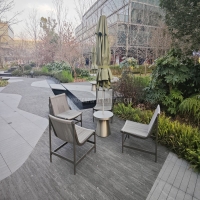Welcome to the website for landscape facilities products and knowledge.
How do reclining features in landscape chairs affect their structural integrity over time?
Reclining features in landscape chairs add comfort and versatility, but they also introduce unique challenges to structural integrity over time. The repeated motion of adjusting the reclining mechanism places stress on joints, hinges, and support frames, potentially leading to material fatigue. High-quality materials like powder-coated steel or marine-grade polymers resist corrosion and wear better than cheaper alternatives, but even these can degrade with prolonged exposure to weather.
The reclining mechanism itself—whether it’s a simple tilt or a multi-position lock—requires precise engineering. Over years of use, friction points may loosen, bolts can wear down, and internal components may fail if not properly maintained. Regular lubrication and tightening of fasteners can extend the chair’s lifespan, but low-cost designs often sacrifice durability for affordability.
Additionally, the weight distribution shifts when reclining, placing uneven stress on the chair’s base. This can cause wobbling or even collapse if the legs or frame aren’t reinforced. For long-term durability, opt for chairs with reinforced joints, rust-resistant hardware, and warranties that cover mechanical failures.
Ultimately, while reclining features enhance comfort, their impact on structural integrity depends on material quality, design precision, and maintenance habits. Investing in well-constructed chairs and proactive care ensures they remain functional and safe for years.
Related search:

Recommendation
Metal structure rattan chair without armrests for single person, with woven seat and backrest.